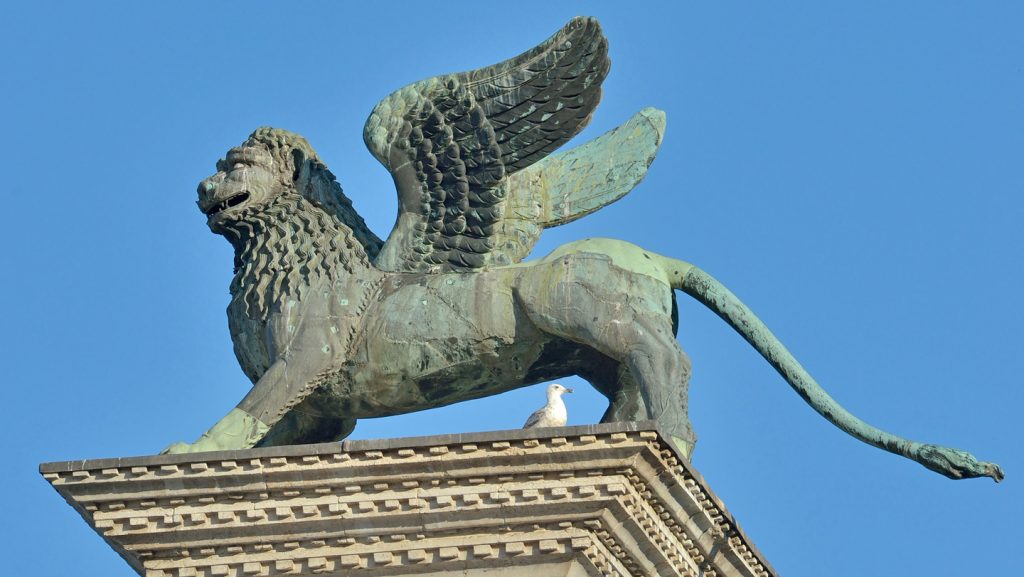From Chinese Guardian to Venetian Symbol: The Remarkable Journey of St. Mark’s Lion
In the heart of Venice’s iconic St. Mark’s Square stands a majestic bronze winged lion, a symbol that has come to define the essence of Venetian identity. But this powerful emblem of medieval Venetian statehood holds a surprising secret that spans continents and centuries. According to groundbreaking research by archaeologist Massimo Vidale of the University of Padua and his team, this famous statue began its life far from the canals of Venice—as a tomb guardian sculpture in China’s Tang Dynasty, which ruled from 618 to 907 CE.
The fascinating journey of this sculpture represents an unexpected cultural exchange between East and West during the medieval period. Vidale’s team suggests that the fearsome Chinese tomb guardian likely reached Venice during the 1260s or shortly thereafter, where local artisans then modified its features to transform it into the winged lion that has become synonymous with Venetian power and prestige. This cultural transformation involved subtle but significant alterations: close examination of the bronze statue reveals evidence that the original Chinese sculpture had its horns removed and ears shortened to better match the Western concept of a lion. These modifications helped disguise the statue’s Eastern origins while adapting it to represent St. Mark’s lion, the patron saint of Venice.
Scientific analysis provides compelling evidence for the statue’s Chinese origins. The researchers conducted detailed metallurgical studies, examining metal samples from the lion’s original parts. They discovered that the distinct forms of lead present in the bronze closely match the lead composition found in copper ore deposits from China’s Lower Yangzi River basin. This chemical fingerprint offers strong scientific support for the statue’s Far Eastern provenance, challenging previous theories that suggested the winged lion was inspired by ancient Mesopotamian or Persian depictions of mythical, lion-headed griffins created approximately 2,300 years ago.
The timing of the statue’s arrival in Venice coincides with a significant period in Venetian history. In the early 1260s, the winged lion transformed from a purely religious symbol into an emblem of Venetian political power and authority. The columns in St. Mark’s Square, including the one supporting the lion statue, were erected around this same time, though interestingly, researchers have not discovered any historical documents that specifically mention when the lion was placed atop its column. This period marked Venice’s ascendance as a maritime power with extensive trading networks throughout the Mediterranean and beyond, making the acquisition of exotic items from distant lands both possible and prestigious.
One of the most intriguing questions surrounding this cross-cultural artifact concerns how an ancient Chinese tomb guardian made its way to medieval Venice in the first place. The researchers propose a tantalizing possibility: Marco Polo’s father Niccolò and uncle Maffeo, who visited the Mongol court in what is now Beijing from 1264 to 1268, may have sent the original statue to Venice along the Silk Road. These merchant adventurers were among the earliest Westerners to establish direct contact with Yuan Dynasty China under Mongol rule, and they would have recognized the value and significance of such an impressive sculpture.
Perhaps the Polos saw in this fierce guardian figure the perfect candidate for conversion into Venice’s winged lion symbol. Though such scenarios remain speculative without definitive historical documentation, the scientific evidence strongly supports the statue’s Chinese origins. This remarkable journey of transformation—from tomb guardian in Tang Dynasty China to proud symbol of Venetian statehood in medieval Italy—represents one of the most fascinating examples of cross-cultural adaptation and artistic repurposing in history. Today, as tourists and locals alike gaze up at the bronze lion overlooking St. Mark’s Square, they’re witnessing not just a symbol of Venice, but a tangible connection to the ancient Silk Road and the surprising ways in which Eastern and Western cultures have influenced one another across the centuries.















